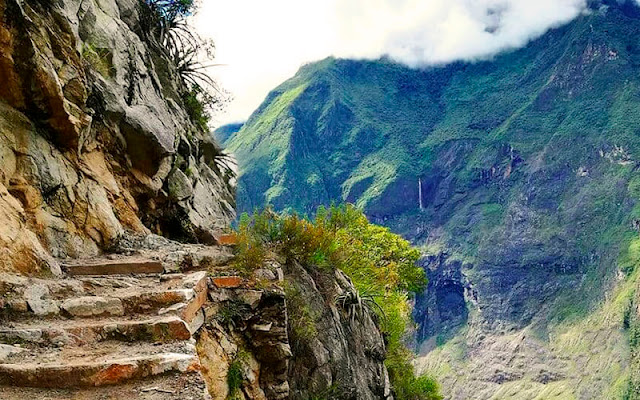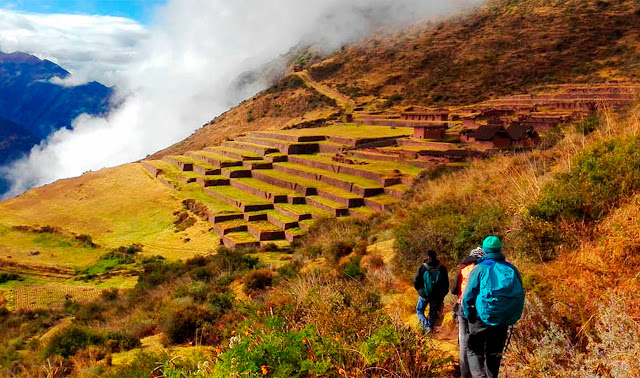The Inca Trail to Machu Picchu is much more than just a hiking trail; it is a journey back in time that immerses you in the rich history and culture of the ancient Inca civilization. Set in the breathtaking mountainous landscapes of the Peruvian Andes, this iconic trail offers adventurers the opportunity to follow in the footsteps of the ancient Incas while exploring lush jungles, ancient ruins and dreamlike panoramic views.
History of the Inca Trail
The Inca Trail was used by the ancient Incas as a trade and pilgrimage route. The trail stretches for more than 40,000 kilometers along the Andes mountain range, crossing six South American countries. The best known and most visited stretch is the one that leads to Machu Picchu, the lost Inca city on the top of a mountain.
History of the Inca Trail
Planning the Trip
The hike to Machu Picchu is a demanding experience, so it is important to plan ahead. Visitors should book months in advance, as the number of hikers allowed on the trail is limited to 500 per day. In addition, hikers should be physically fit and acclimatized to the altitude before starting the hike.
The Inca Trail route
the way, as well as a number of Inca archaeological sites.
Tips for the Trek
To fully enjoy the hike to Machu Picchu, it is important to be prepared and follow some useful tips. Trekkers should bring appropriate clothing for the weather, good walking shoes and a small first aid kit. It is also important to bring enough water and food, as there are not many places to buy supplies along the way.
Alternative Routes To The Inca Trail
Salkantay Trek
This is one of the most popular alternative routes. It offers breathtaking views of the snow-capped Salkantay and passes through varied landscapes, from mountains to rainforests. The route is more challenging in terms of altitude and terrain, but the reward is an authentic and scenic experience.
Lares Trek
This route is ideal for those who wish to experience the local culture of the Andean villages. Along the way, you will have the opportunity to interact with the local communities, learn about their traditions and enjoy the natural hot springs in the Lares Valley.
Choquequirao Trek
If you are looking for a more serious challenge, this route is perfect. It will lead to the citadel of Choquequirao, often called "the other Machu Picchu" due to its architectural similarities. The trail is less traveled but offers spectacular views and a deep sense of exploration.
Inca Jungle Trek
If you like adventure, this route combines hiking with activities such as mountain biking and ziplining. It will take you through diverse and exciting landscapes, culminating in the arrival at Machu Picchu.
Vilcabamba Trek
This route is a longer and more challenging option, but it is also one of the most authentic. It takes you through stunning Andean landscapes and gives you the opportunity to explore lesser-known ruins before reaching Machu Picchu.
Huchuy Qosqo Trek
A shorter but equally beautiful route, which takes you through a variety of landscapes before reaching the ruins of Huchuy Qosqo and finally Machu Picchu.
Short Inca Trail
If you want a shorter but equally impressive experience, this option takes you along a smaller section of the Inca Trail, culminating at the entrance to Machu Picchu through the Sun Gate.
The Inca Trail to Machu Picchu is a unique and unforgettable experience that offers spectacular views and an immersion into Inca culture and history. For those looking for a challenging and exciting adventure, this trek is an excellent option. With good planning and preparation, visitors can enjoy an incredible experience in one of South America's most popular tourist destinations.





Comments
Post a Comment